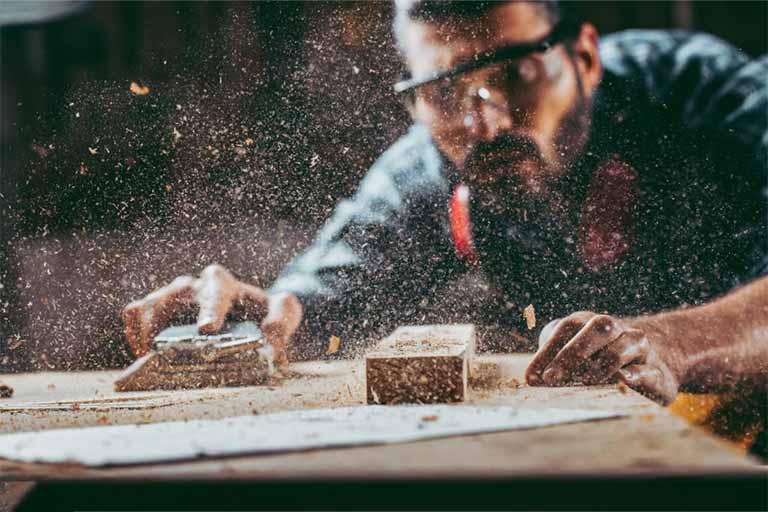
How to Sand Plywood: Techniques and Tools
How to Sand Plywood: Techniques and Tools
Sanding is a critical process in woodworking, a technique that prepares the surface of the wood for painting or varnishing. Plywood, a highly versatile and commonly used material, often requires sanding to achieve a smooth finish. SFK Plywood understands the intricacies involved in sanding plywood, be it film faced plywood, hexa plywood, or birch faced plywood. This article provides a comprehensive guide on various techniques and tools employed to sand plywood effectively.
Techniques for Sanding Plywood
There are two primary methods to sand plywood, namely, hand sanding and power sanding. Each technique has its unique benefits, drawbacks, and application scenarios.
Hand Sanding
Hand sanding, as the term suggests, involves manually sanding the surface of the plywood using a block and sandpaper. It offers the advantage of control, allowing for meticulous attention to detail. This method is highly suitable for plywood slats, thin flexible plywood, and patterned plywood where a gentle touch is needed.
However, hand sanding is labor-intensive and time-consuming, making it less practical for larger surfaces. Furthermore, achieving a consistent result can be challenging, especially for novice craftsmen.
To hand sand plywood, start with coarser grit sandpaper and gradually work your way to finer grits. Maintain a consistent pressure and follow the grain of the wood to prevent scratches and maintain the integrity of the plywood.
Power Sanding
On the opposite end of the spectrum is power sanding, a method that uses powered tools to expedite the sanding process. Power sanding is advantageous when dealing with larger surfaces or harder plywood grades, like film faced birch plywood or uv coated plywood.
The drawback of power sanding is the potential for over-sanding, which can quickly ruin a project. Power sanders also generate significant dust, requiring suitable safety measures.
Power sanding techniques vary based on the tool used. Regardless, it’s always advisable to start with a coarse grit sandpaper, moving to finer grits as you progress. Unlike hand sanding, power sanding can be performed in circular motions, providing a uniform finish.
Tools for Sanding Plywood
Just as there are techniques, there are also specific tools designed for sanding plywood. The two most common tools are sandpaper and sanding machines.
Sandpaper
Sandpaper, a paper backed with abrasive material, is the most rudimentary tool used for sanding. Different grit sizes determine the roughness of the sandpaper. Coarser grits (lower numbers) are used for initial sanding stages, while finer grits (higher numbers) are used for finishing touches.
Choosing the right sandpaper depends on the type and grade of plywood. For instance, exterior plywood grades require different sandpaper than interior grades. Additionally, some plywood types like hexa flooring or smooth exterior plywood may require specific grit ranges.
Using sandpaper effectively involves adhering to a sanding sequence. Start with a coarse grit, then move progressively to finer grits. This process helps to remove scratches and surface imperfections while achieving a smooth finish.
Sanding Machines
For larger projects or when dealing with harder plywood types, sanding machines are the tool of choice. These machines come in various forms, such as belt sanders, disk sanders, or orbital sanders. Each type offers its own set of advantages and disadvantages.
Choosing the right sanding machine depends on the project scope and plywood type. SFK Plywood, one of the top plywood brands, advises its customers to consider factors like machine power, dust collection capabilities, and ease of use before making a decision.
Regardless of the machine type, always ensure you’re using it in a safe and controlled manner. Maintain a steady speed and avoid applying too much pressure to prevent damage to the plywood.
Tips for Sanding Plywood
Achieving a professional-grade sanding finish involves more than just applying sandpaper or a machine to the plywood. It’s an art, one that involves preparation, technique, and finishing.
Preparing the Plywood
Before sanding, clean the plywood to remove any dirt or debris. Filling any voids or defects in the plywood ensures a smooth and even finish. Choose the correct sanding sequence based on the plywood grade and the desired outcome.
Sanding Techniques
Adopting the correct sanding pattern is crucial to a successful sanding process. Maintain a consistent sanding speed and apply just the right amount of pressure. Remember, the goal is to remove surface imperfections, not the plywood layer itself.
Finishing the Plywood
After sanding, the plywood needs a suitable finish to protect it and enhance its appearance. The finish depends on the type of plywood and its intended use. For example, UV prefinished plywood requires a different finishing technique than laminated birch plywood.
In conclusion, sanding is a vital process that transforms the rough surface of plywood into a smooth and appealing finish. Understanding the correct sanding techniques and using the appropriate tools is essential to achieving a professional-grade finish. SFK Plywood provides top-quality plywood that is suitable for all sanding techniques and finishes.
For more information about birch plywood or other plywood types and grades, or to learn more about the global plywood market trends, please fill up the form or call us. Let SFK Plywood, a leading plywood wholesale supplier, help you with all your plywood needs. Trust the top ply brand to help you make informed decisions about your next plywood purchase.






